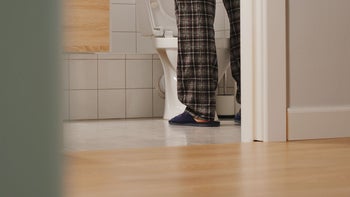
The Pelvic Floor: How These Muscles Affect Your Everyday Life
Key takeaways:
The pelvic floor is made up of the muscles and tendons that attach to the pelvic bones.
Weak pelvic floor muscles can lead to urine incontinence, erectile dysfunction, and discomfort during sex.
Exercises, physical therapy, and medical devices can help strengthen a weak pelvic floor.

Your pelvic floor muscles are some of the most important muscles in your body. But many people haven’t heard of them.
These MVPs give you control over your bladder and bowels. They’re also the muscle group that helps you have sex. When your pelvic muscles aren’t working properly, you can develop trouble holding in your urine and stool, pain during sex, and erectile dysfunction.
So how can you keep your pelvic floor healthy? Here’s everything you need to know about your pelvic floor and how to make sure it stays strong.
Search and compare options
Which muscles make up the pelvic floor, and what do they do?
The pelvic floor is made up of two major muscle groups — the levator ani muscle and coccygeus muscle. These muscles hold the organs that sit in the pelvis in place, including the:
Bladder and urethra
Anus and rectum
Uterus and vagina
Prostate
Your pelvic floor muscles help control the openings (sphincters) where your urine and stool come out.
They’re also part of your “core muscles,” so they stabilize your lower back and pelvis and let you keep your posture.
And they also play a role in sexual function and allow people to have an orgasm.
What are the symptoms of pelvic floor dysfunction?
Pelvic floor dysfunction is a medical condition where the pelvic floor muscles aren’t working properly. You can develop pelvic floor dysfunction if your pelvic floor muscles are weak or if the muscles are too rigid.
Read more like this
Explore these related articles, suggested for readers like you.
In both cases, the pelvic floor muscles can’t contract the way they’re supposed to. And this causes symptoms like:
Trouble holding in your urine (urinary incontinence)
Feeling like you have to pee more often
Dribbling urine when you cough or sneeze
Trouble starting your urine stream
Trouble holding in stool or gas
Erectile dysfunction
Trouble having an orgasm
Lower back pain
What is pelvic organ prolapse?
People who have pelvic floor dysfunction can also develop pelvic organ prolapse. This is when the organs in the pelvic bulge into the vagina, rectum, or urethra.
Pelvic organ prolapse can be difficult to treat and lead to all of the symptoms of pelvic floor dysfunction.
Who develops pelvic floor dysfunction?
Anyone can develop pelvic floor dysfunction. But certain things increase the risk of developing pelvic floor dysfunction, like:
Pregnancy and childbirth: Pregnancy puts extra strain on the pelvic floor muscles. These muscles have to hold up the extra weight of a baby during pregnancy. They also get stretched during labor. The more times you undergo pregnancy and childbirth, the more likely you are to develop pelvic floor dysfunction.
Aging: Muscles naturally get weaker with age. Pelvic floor muscles are no exception. Hormonal changes during menopause can also weaken the pelvic floor.
Trauma: Trauma to the pelvic floor can lead to pelvic floor dysfunction. This includes injuries as well as surgeries, like hysterectomy (uterus removal) and prostatectomy (prostate removal).
Muscle strain: Anything that puts extra stress on the pelvic floor muscles can lead to pelvic floor dysfunction. This includes frequent straining from constipation and sports that stress the pelvic floor muscles, like gymnastics, jumping, and running. Excess weight also increases the stress on the pelvic floor muscles and can lead to pelvic floor dysfunction.
Medications: Certain medications can weaken pelvic muscles, including some blood pressure medications, muscle relaxers, and certain pain medications
What’s the treatment for pelvic floor dysfunction?
There are many treatment options for pelvic floor dysfunction. The right one for you depends on your symptoms. Some options include:
Strengthening exercises: If your pelvic floor muscles are weak, pelvic floor exercises can help. Kegel exercises are the most popular type of pelvic floor strengthening exercises. Doing these exercises correctly can be tricky, so you may want to work with your provider or a physical therapist to make sure you have the right technique. Your physical therapist may even use biofeedback to help you perfect your technique.
Relaxation exercises: If your pelvic muscles are too rigid, you may need to practice pelvic floor relaxation exercises. Pelvic floor physical therapy teaches you these exercises along with massage therapy you can do at home.
Diet changes: Increasing your fiber intake can help lessen constipation. And avoiding certain diet triggers — like caffeine, alcohol, sweet foods, and spicy foods — can help lessen urinary incontinence.
Medications: If you have urinary incontinence because of pelvic floor dysfunction, medications like tolterodine or mirabegron can help. Topical estrogens can also help if you’re going through menopause or having pain with intercourse.
Procedures and medical devices: For some people, nerve stimulation can help relieve incontinence. If you have vaginal prolapse, a pessary can help. A pessary is a plastic or silicone device that can be inserted into the vagina to stop organ prolapse.
The bottom line
The pelvic floor is made up of several muscle groups. These muscles help you control your bladder and bowels. They also help you have sex. The pelvic floor muscles can become weak or damaged over time and after childbirth. Pelvic floor exercises and pelvic floor physical therapy can help keep your pelvic floor muscles healthy and relieve symptoms from pelvic floor dysfunction.
Why trust our experts?


References
Bordoni, B., et al. (2022). Anatomy, abdomen and pelvis, pelvic floor. StatPearls.
Chen, G-D. (2007). Pelvic floor dysfunction in aging women. Taiwanese Journal of Obstetrics & Gynecology.
Gowda, S. N., et al. (2021). Anatomy, abdomen and pelvis, levator ani muscle. StatPearls.
Grimes, W. R., et al. (2022). Pelvic floor dysfunction. StatPearls.
Hernández-Hernández, D., et al. (2021). Long-term outcomes of sacral nerve stimulation in pelvic floor dysfunctions. International Neurology Journal.
Huang, Y. C., et al. (2022). Kegel exercises. StatPearls.
Jones, K. A., et al. (2010). Pessary use in pelvic organ prolapse and urinary incontinence. Obstetrics & Gynecology.
Louis-Charles, K., et al. (2019). Pelvic floor dysfunction in the female athlete. Current Sports Medicine Reports.
National Institute of Diabetes and Digestive and Kidney Diseases. (2021). Symptoms & causes of bladder control problems (urinary incontinence).
Rosenbaum, T. Y. (2007). Pelvic floor involvement in male and female sexual dysfunction and the role of pelvic floor rehabilitation in treatment: A literature review. Journal of Sex Medicine.
U.S. Food & Drug Administration. (2019). Pelvic organ prolapse (POP).
Zizzi, P. T., et al. (2017). Women’s pelvic floor muscle strength and urinary and anal incontinence after childbirth: A cross-sectional study. Revista da Escola de Enfermagem da USP.





























